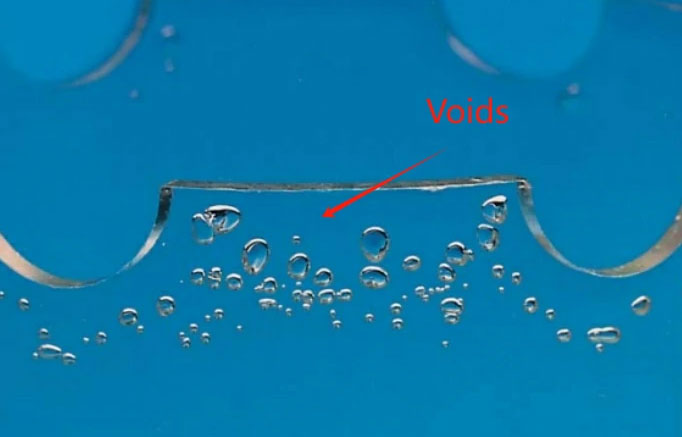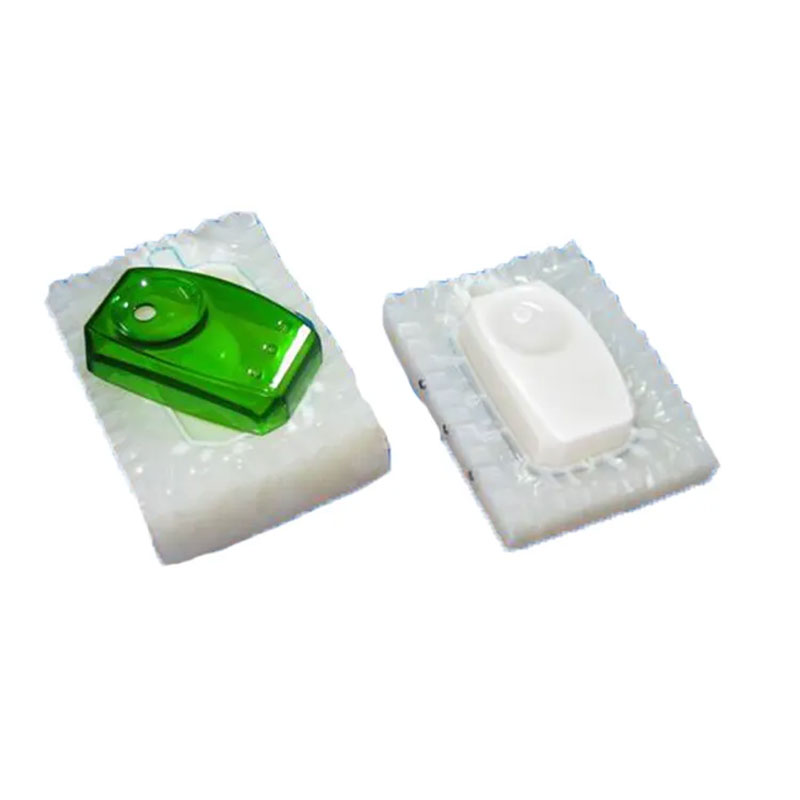Voids are mainly manifested as cavities or bubbles inside plastic products, which may be caused by plastic not completely filling the mold cavity during the injection molding process.

According to different manifestations, voids can be:
Vacuum Voids
During the injection molding process, vacuum voids are caused by the plastic surface contacting the low-temperature mold wall during the solidification period of the melt, with shrinkage concentrated in thick-walled sections, or due to trapped air.
Air Pockets
Air pockets are caused by the presence of gases in the mold during the injection molding process that are not completely eliminated. They typically appear as white or black holes.
Causes of Voids
The gate design is flawed.
Insufficient holding pressure (setting value too low, insufficient time).
Entrapment of air during filling.
Influence of mold temperature.
Rapid shrinkage rate.
Remedies for Voids
Increase gate size.
Extend holding pressure time.
Raise mold temperature.
Utilize low viscosity materials.
Reduce thickness.
Decrease screw rotation speed and increase back pressure.


